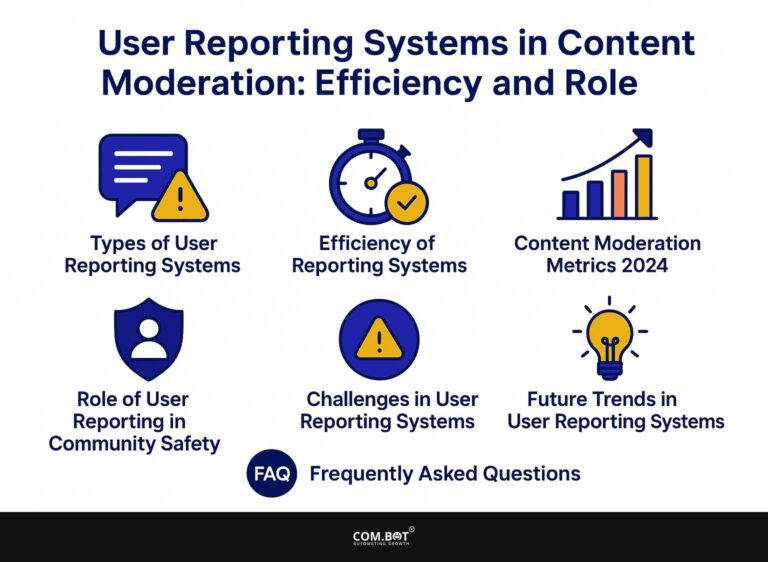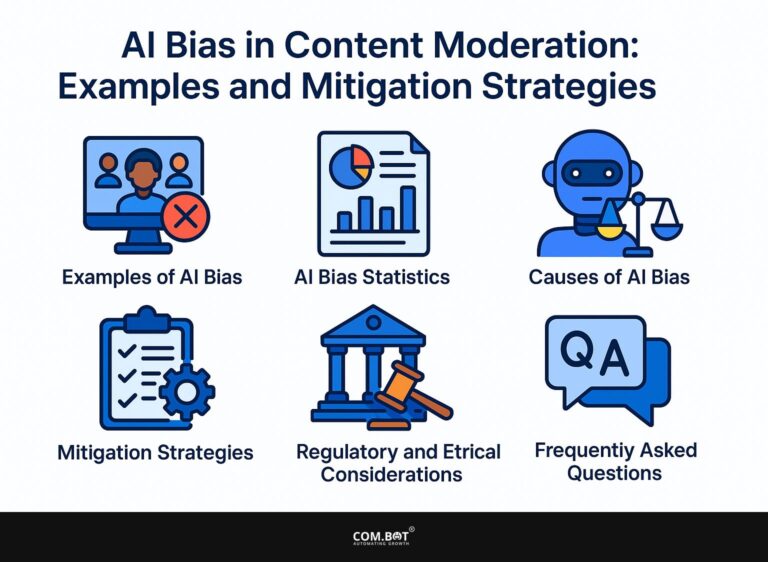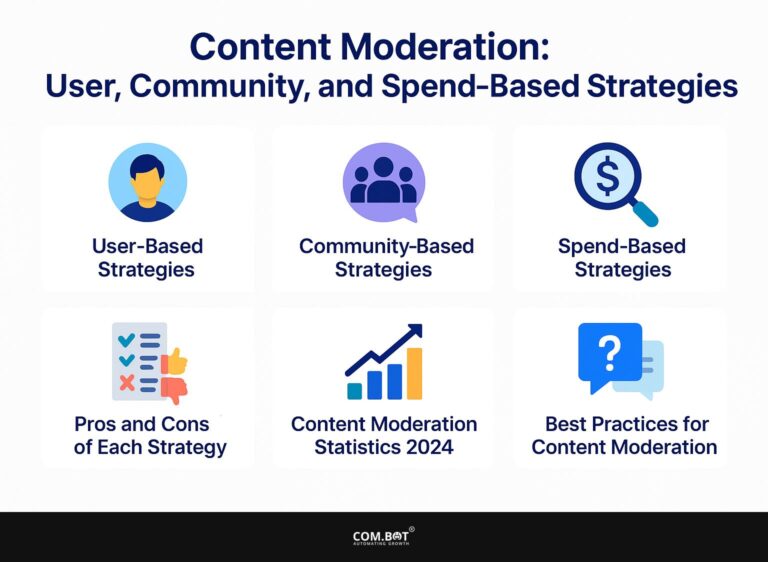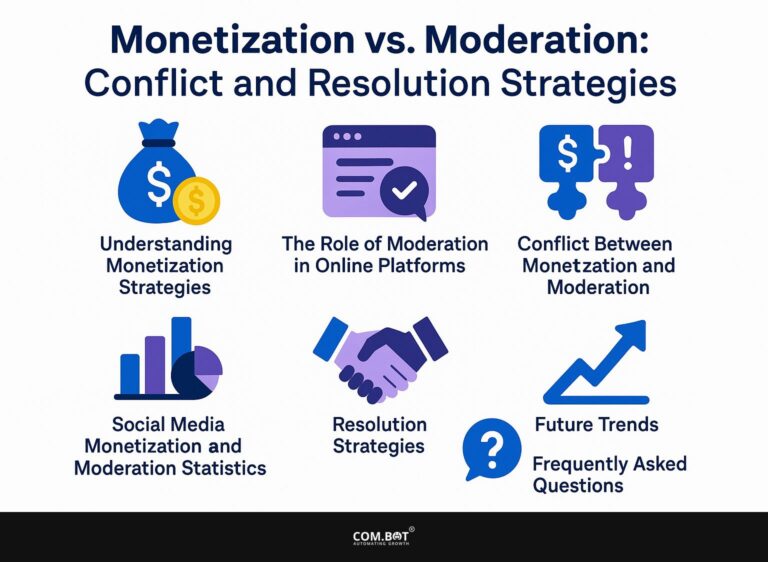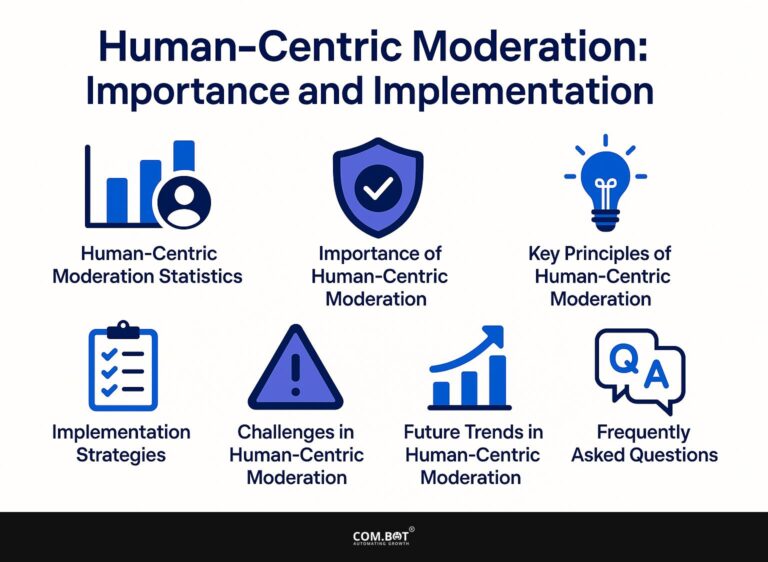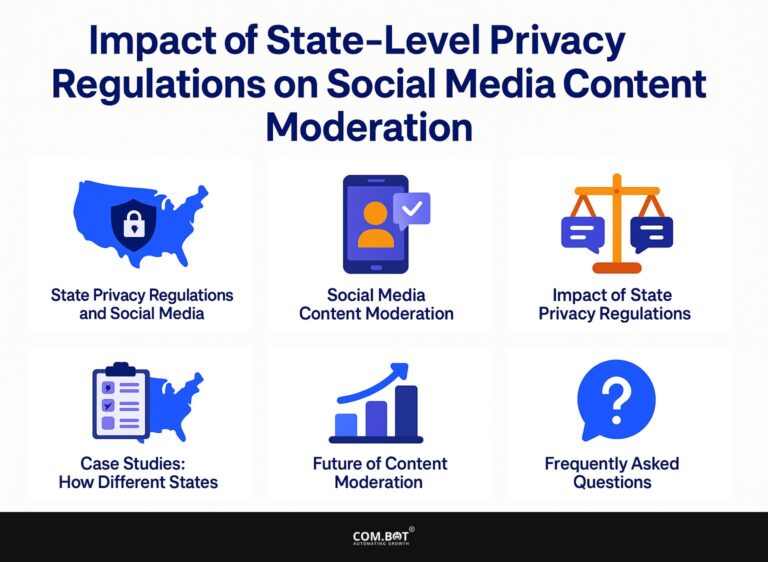Challenges in Detecting Violative Content: Technological Solutions
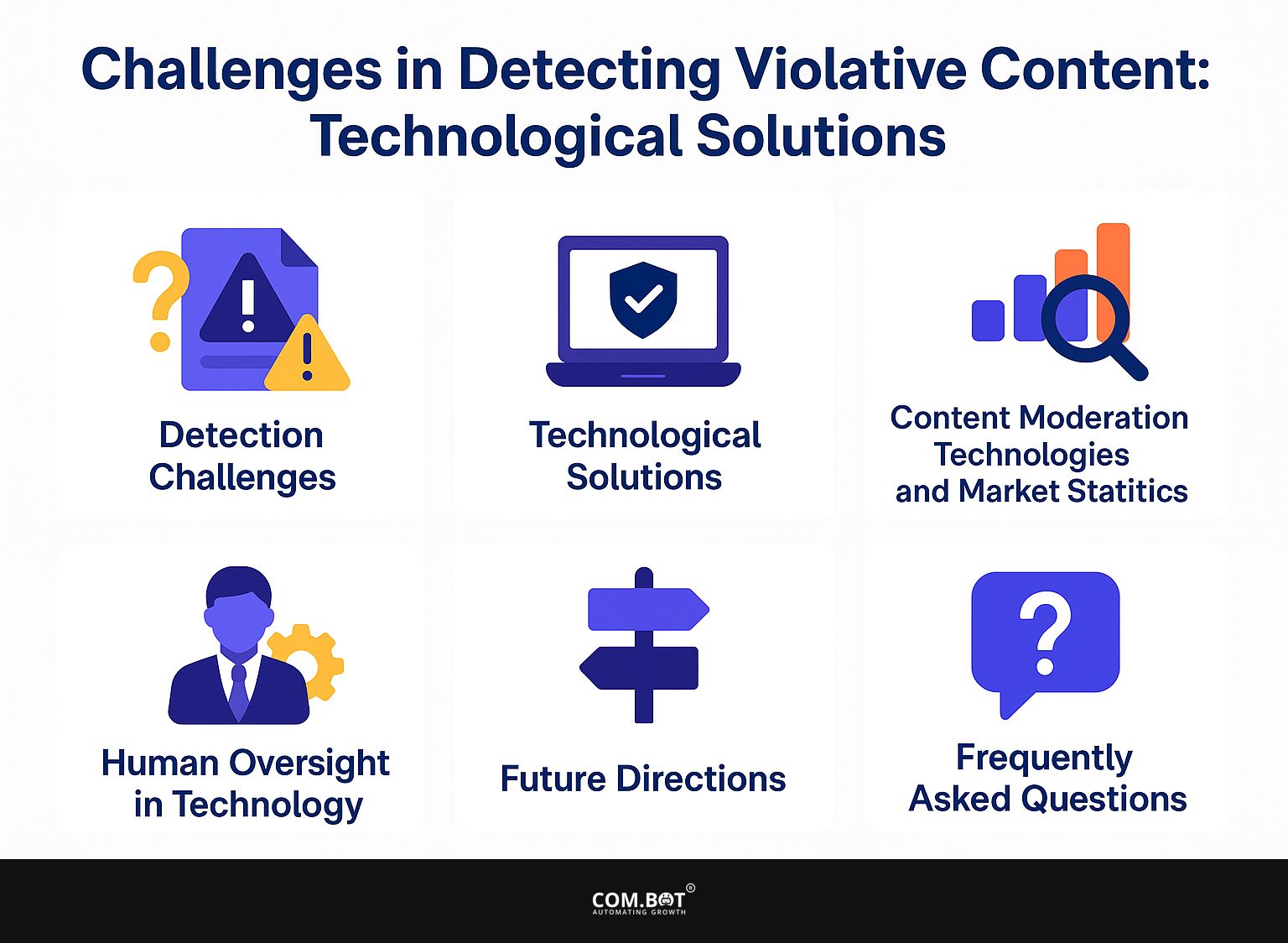
Detecting child sexual abuse material (CSAM) poses significant challenges for law enforcement agencies. As digital evidence grows, organizations like the National Center for Missing & Exploited Children and the Internet Watch Foundation use new tools like hash matching and machine learning to identify CSAM.
This article looks into the challenges of finding harmful content and discusses new technology that improves the ways to find such content, making online spaces safer for everyone.
Key Takeaways:
- Finding harmful content is important for keeping the internet safe and welcoming.
- The volume and diversity of violative content poses significant challenges for detection using traditional methods.
- Technological solutions such as machine learning and NLP, along with human oversight, are key in effectively detecting and addressing violative content.
- 1 Challenges in Detection
- 2 Technological Solutions
- 3 Content Moderation Technologies and Market Statistics
- 4 Content Moderation Technologies and Market Statistics
- 4.1 Content Moderation Market Outlook: Global Market Growth
- 4.2 Content Moderation Market Outlook: Regional Market Growth
- 4.3 Content Moderation Decisions: Content Moderation by Platform
- 4.4 Content Moderation Practices: Content Categories
- 4.5 1. Machine Learning Approaches
- 4.6 2. Natural Language Processing (NLP)
- 5 Human Oversight in Technology
- 6 Future Directions
- 7 Frequently Asked Questions
- 7.1 1. What are some challenges in detecting violative content?
- 7.2 2. How do technological solutions help in detecting violative content?
- 7.3 3. What are the limitations of relying solely on technological solutions?
- 7.4 4. How can technological solutions stay effective as violative content changes?
- 7.5 5. What role do internet companies play in addressing the challenges of detecting violative content?
- 7.6 6. Can technological solutions be used to detect violative content across different languages and cultures?
1. Definition of Violative Content
Violative content encompasses any material that violates laws or community guidelines, particularly content related to digital threats like child exploitation.
Clearly defining harmful content is essential for successful detection methods. For example, identifying Child Sexual Abuse Material (CSAM) requires knowing its legal definitions, which differ depending on location but usually cover any visual representation of sexual activity involving minors.
Tools like photo recognition software, such as Microsoft PhotoDNA, can help organizations detect and prevent CSAM dissemination by hashing known images.
Creating reporting systems that allow users to flag content that appears questionable increases community awareness, aiding in identifying issues more thoroughly instead of relying solely on automated methods.
2. Importance of Detection
Finding harmful content is important for online platforms to follow laws and keep users safe from online dangers. It protects users and helps platforms prevent legal issues.
Groups such as the National Center for Missing and Exploited Children (NCMEC) offer important help and advice on finding inappropriate material. Legislation such as the UK’s Online Safety Bill emphasizes the importance of monitoring harmful material.
To make good use of AI tools, platforms can use Google Cloud’s Perspective API to check user-generated content for possible rule violations, helping create a safer internet.
Challenges in Detection
Even with progress in technology, finding harmful content involves major difficulties that prevent proper action.
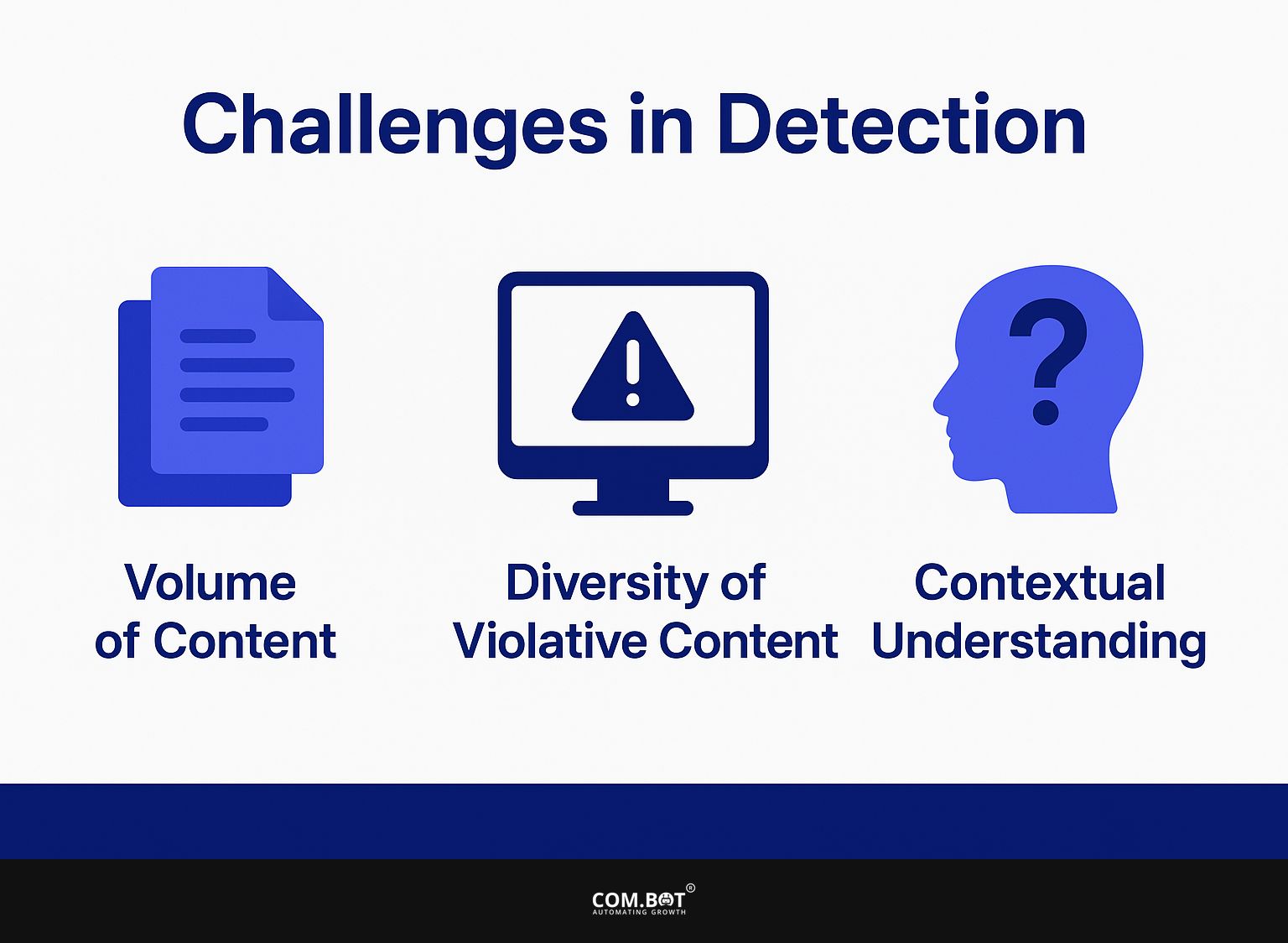
1. Volume of Content
The sheer volume of user-generated content on platforms like Facebook and Instagram poses a significant hurdle for effective violative content detection.
With approximately 4.5 billion daily uploads on Facebook alone, manual review processes quickly become unmanageable. Automatic systems are essential for managing this vast amount of content.
Programs like Facebook’s DeepText and Google’s Perspective API can analyze posts and find potential issues at the time of posting. These systems classify content based on context and keywords, drastically improving the efficiency of content moderation.
Using these tools together speeds up the process of identifying issues and reduces human errors.
2. Diversity of Violative Content
The diversity of violative content, ranging from different formats to various types of illegal activities, complicates detection efforts.
To effectively combat this challenge, employing a variety of detection methods is essential. Text-based violations often use keyword filters, while images and videos need advanced AI classifiers that can recognize inappropriate content by examining the context.
For example, tools like Google Cloud Vision or Amazon Rekognition can examine visual content, while Natural Language Processing (NLP) algorithms are important for examining text.
Using multiple layers of technology provides complete protection and improves the ability to find and deal with various illegal activities.
3. Contextual Understanding
Knowing the situation is key to correctly spotting harmful content, as the same images can mean different things depending on where they are used.
To improve moderation, use advanced tools that examine the surrounding details. For instance, PhotoDNA can detect duplicate images while assessing their context to distinguish between permissible and violative content.
Similarly, Google Cloud Vision API offers powerful image recognition features, enabling moderators to flag potentially harmful visuals based on context. Creating rules that use these tools helps maintain compliance and lowers the chance of errors, leading to better content management.
Technological Solutions
Technological solutions like machine learning and natural language processing are leading the way in improving the detection of harmful content, including identifying AI-generated personas that can be challenging to moderate. To delve deeper into this topic, you might find our recent discussion on Detecting AI-Powered Personas: Solutions particularly insightful.
Content Moderation Technologies and Market Statistics
Content Moderation Technologies and Market Statistics
Content Moderation Market Outlook: Global Market Growth
Content Moderation Market Outlook: Regional Market Growth
Content Moderation Decisions: Content Moderation by Platform
Content Moderation Practices: Content Categories
The Content Moderation Technologies and Market Statistics offers a detailed view of the expanding content moderation business, concentrating on market growth, regional variations, particular moderation steps on platforms, and categories of moderated content. This data is key for learning how technology changes to handle online communications.
Content Moderation Market Outlook reveals that the global market is valued at $11.9 billion in 2024. Over a decade, it is expected to grow at a compound annual growth rate (CAGR) of 10%, reaching $30.8 billion by 2034. This significant growth highlights the rise in online activities and the necessity for good moderation tools to manage content on various platforms.
- Regional Market Growth: North America is projected to hold a 34% market share by 2034, emphasizing its strong position in technology development and adoption. Meanwhile, South Korea, Japan, and China show promising growth, with CAGRs of 11.4%, 11.1%, and 10.6% respectively, indicating expanding capabilities and market interest in these regions.
Content Moderation Decisions data highlights the volume of moderation activities across platforms. Facebook leads with 903,183 moderation decisions in one day, reflecting its vast user base and diverse content. Pinterest follows with 634,666 decisions, showing its focus on regulating specific content types. TikTok, YouTube, and Instagram also manage significant moderation loads, each responding to unique platform challenges.
Content Moderation Practices illustrate how platforms address harmful content across categories. TikTok tackles 208,968 instances of legal or harmful speech, prioritizing user safety. Pinterest focuses on pornography moderation with 592,680 actions, reflecting its visual content nature. TikTok also targets violence moderation with 39,053 actions, while YouTube handles 26,911 intellectual property cases essential for protecting creators’ rights.
Overall, the Content Moderation Technologies and Market Statistics Point out the need for strong moderation to keep the internet safe. The market growth and regional expansion signify a strategic focus on developing technologies to effectively manage the increasing volume and complexity of digital content. As platforms manage their specific issues, content moderation is essential for building trust and safety online.
1. Machine Learning Approaches
Machine learning approaches allow for scalable detection of violative content by recognizing patterns in large datasets. Supervised learning is a prominent method used for abuse detection, where algorithms like neural networks are trained on labeled datasets.
For instance, Google employs this technique to filter spam, utilizing vast amounts of data from user reports. In the same way, Microsoft’s Content Moderation API uses supervised learning to detect harmful content on platforms.
To implement this, organizations can gather training data, label examples of violative and non-violative content, and then train models using tools such as TensorFlow or PyTorch. Regularly updating the model with new data helps it remain accurate and work well.
2. Natural Language Processing (NLP)
Natural language processing (NLP) improves the identification of harmful text content by examining language details and surrounding clues. Using NLP methods, platforms can analyze user reports and identify feelings in messages.
For instance, AWS Comprehend allows real-time analysis, interpreting user feedback to filter out toxic comments and identify abusive language patterns. This tool can be seamlessly integrated into existing moderation systems.
Using sentiment analysis tools helps sort comments into positive, negative, or neutral categories. This lets moderators concentrate on situations requiring immediate attention, speeding up the content review process.
Human Oversight in Technology
Technology identifies harmful content, but humans are needed to review it for correctness and clarity.
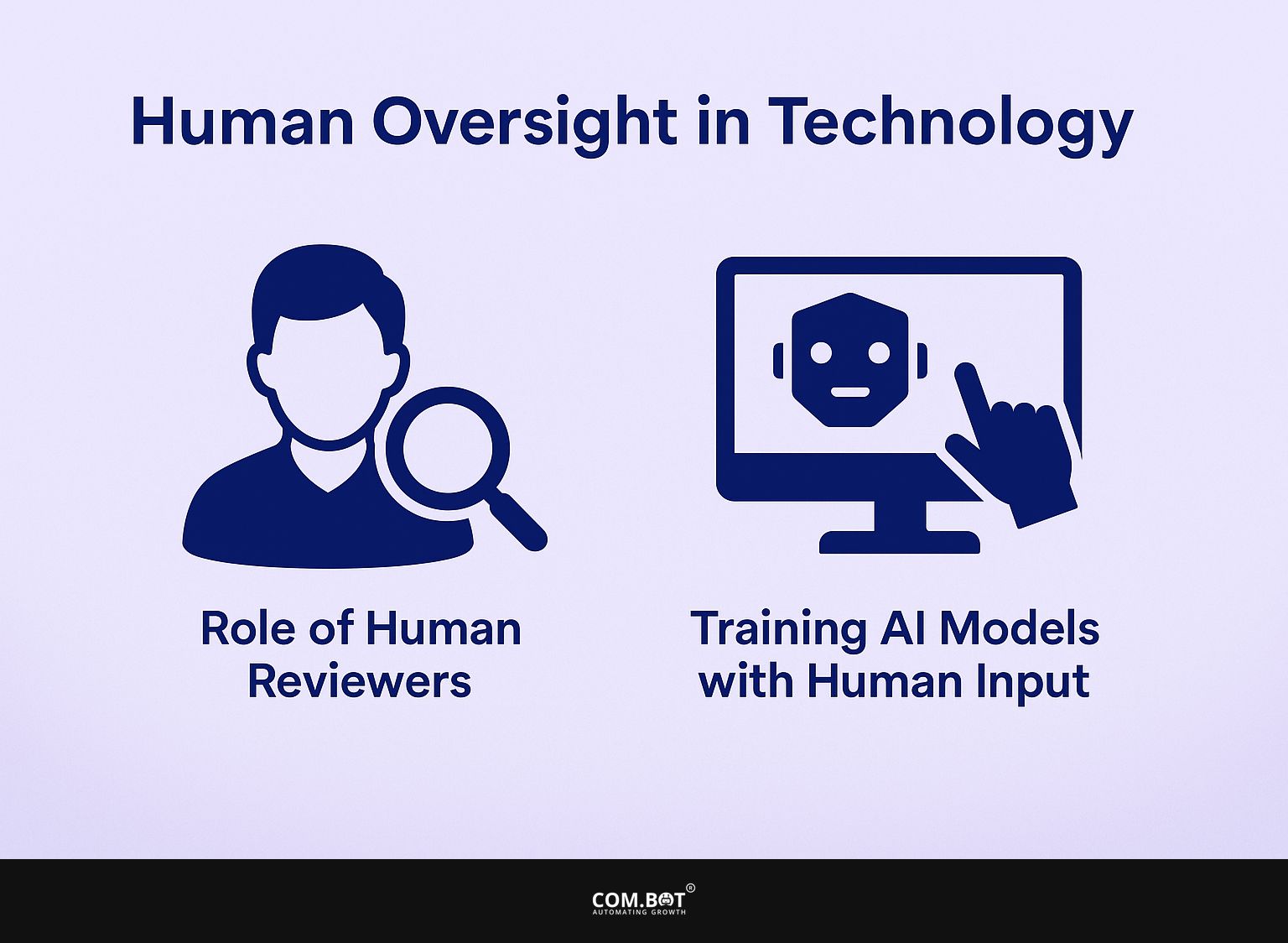
1. Role of Human Reviewers
Human reviewers are important for handling challenging cases where automated systems might fail to assess the situation accurately. These reviewers play a key role in keeping content moderation at a high level.
They check marked content by looking at the tone and details that machines might miss, determining if the content violates rules.
For instance, a computer program might flag a post for having a lot of offensive words, but a human can decide if it’s meant as a joke or really offensive. Data shows that automated decisions are wrong 20% of the time, so people need to check them to make sure the content is fair and balanced.
2. Training AI Models with Human Input
Training AI models with human input significantly improves the accuracy of violative content detection systems. This process often includes repeated training sessions, where human feedback plays a key role.
Annotators can review highlighted content to help the model learn from both correct and incorrect results. Tools like TensorFlow and PyTorch help create these models, enabling teams to use transfer learning methods.
By using feedback from people and changes made by machines, organizations can improve the accuracy of their models over time. Checking the model every two weeks helps make it better over time.
Future Directions
The next steps for detecting harmful content involve using AI improvements and working together across different platforms.
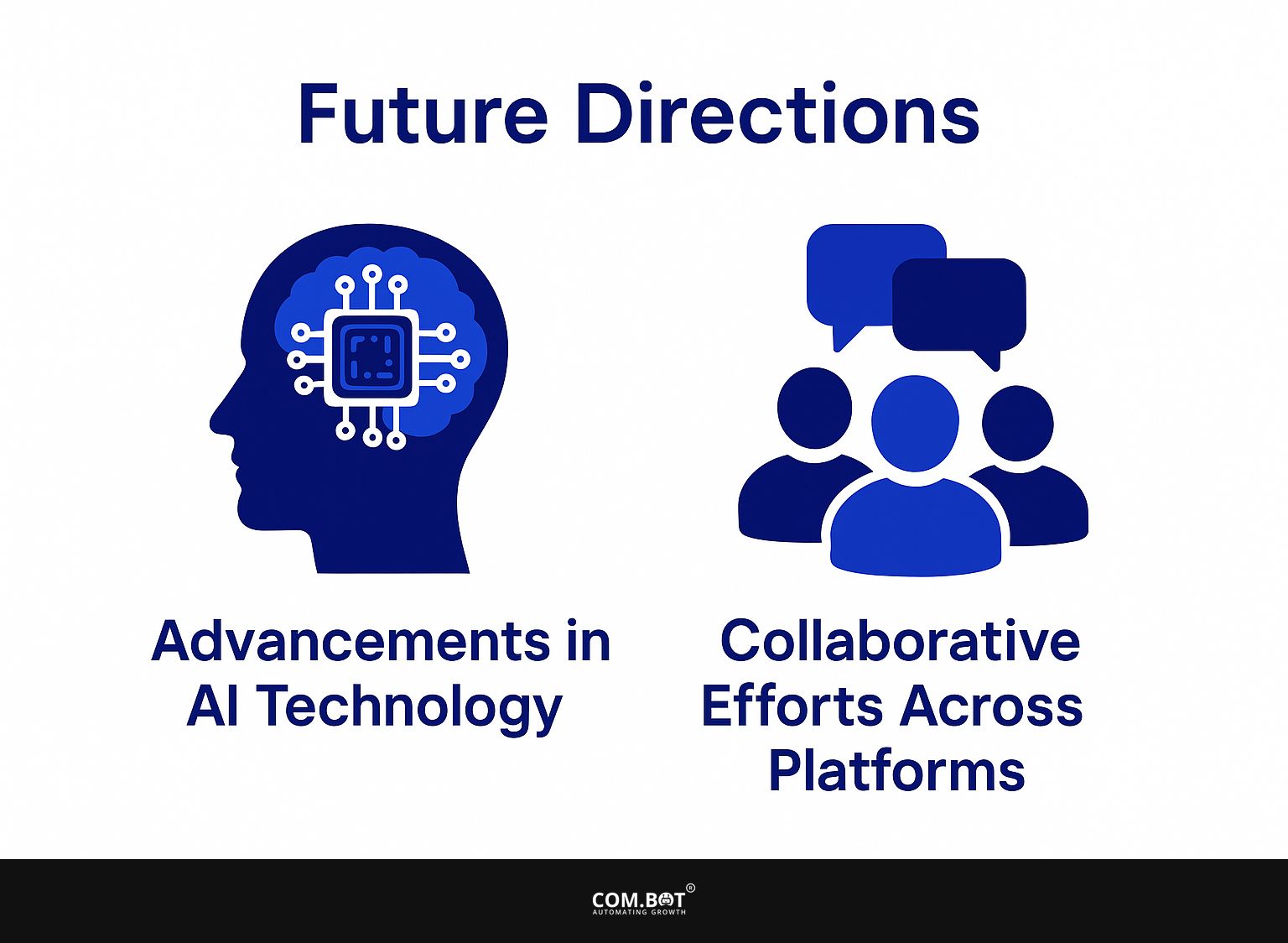
1. Advancements in AI Technology
Recent progress in AI technology, like perceptual hashing and automatic compliance tracking, is improving detection abilities. These new methods help find Child Sexual Abuse Material (CSAM) by examining images for distinct patterns, enabling quick detection even when the images are modified.
For example, tools like PhotoDNA use perceptual hashing to generate unique digital identifiers of known CSAM, aiding law enforcement in precisely locating illegal content.
Compliance tracking systems automatically handle the reporting process, reducing incorrect alerts that often trouble organizations. This two-step method makes detection more reliable and helps handle cases better.
2. Collaborative Efforts Across Platforms
Collaborative efforts among platforms are critical to developing a unified approach to fighting violative content, particularly in meeting legislation demands.
For example, the partnership between Meta and the National Center for Missing & Exploited Children (NCMEC) shows effective teamwork. By using shared technology like sophisticated image recognition and reporting tools, they make the process of finding and reporting content related to child exploitation simpler and faster.
Joint initiatives like the “Take It Down” program enable both organizations to address this pressing issue proactively, ensuring a rapid response. By aligning their policies and resources, they improve each other’s abilities and create a model for working together to protect at-risk communities online.
Frequently Asked Questions
1. What are some challenges in detecting violative content?
Detecting harmful content is challenging because of the large amount of uploads, the changing forms of this content, and the use of sophisticated methods by bad actors to escape detection.
2. How do technological solutions help in detecting violative content?
Technological solutions use algorithms and machine learning techniques to scan and analyze large amounts of data, helping to identify potentially violative content and flag it for further review by human moderators.
3. What are the limitations of relying solely on technological solutions?
While technological solutions can help in detecting violative content, they are not foolproof and may miss certain types of content. Human moderators are still needed to review and make final decisions on whether content should be removed.
4. How can technological solutions stay effective as violative content changes?
Technology is frequently upgraded to counteract new methods used by cybercriminals. This includes incorporating new data sources and refining algorithms to better detect violative content.
5. What role do internet companies play in addressing the challenges of detecting violative content?
Internet companies have a responsibility to invest in and implement effective technological solutions for detecting violative content on their platforms. They also play a role in educating users and promoting responsible online behavior to reduce the dissemination of such content.
6. Can technological solutions be used to detect violative content across different languages and cultures?
Yes, technological solutions can be trained to find content that breaks rules in many languages and cultures, though it is a challenging task to handle cultural and language differences. Human moderation is still essential in these cases.
